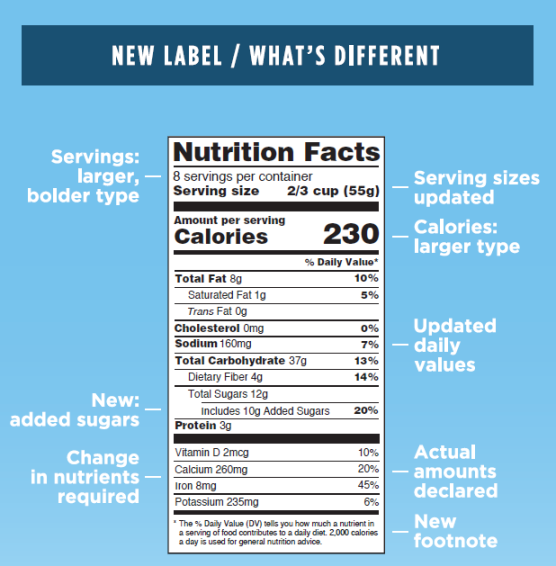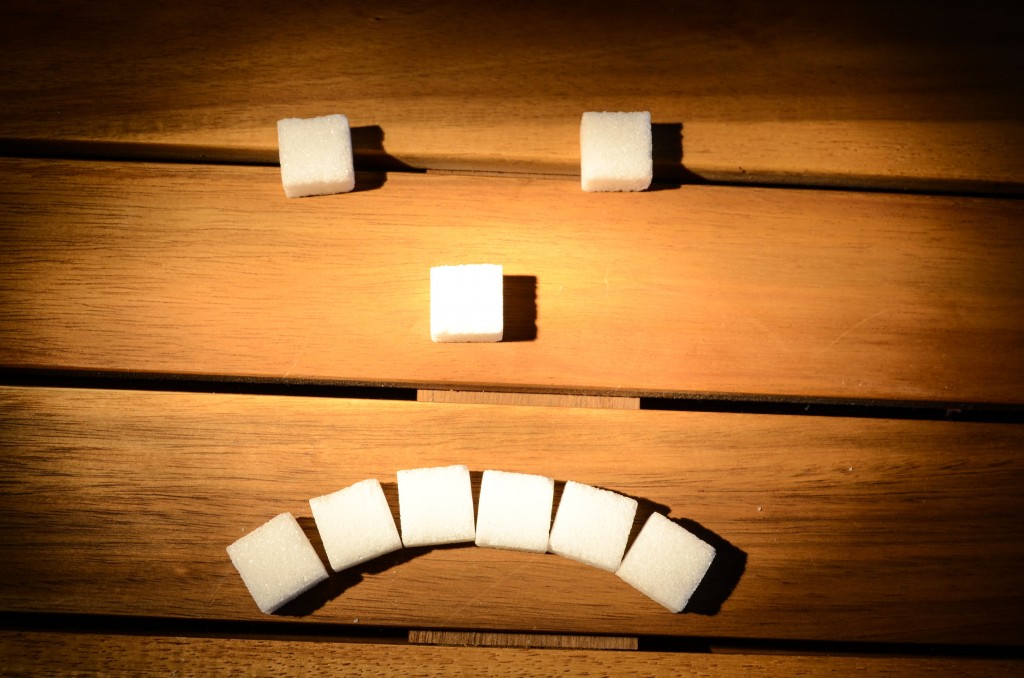Recently, we have seen the sugar industry under attack. Added sugar is a hot topic currently and we are seeing articles with titles like, “Is Sugar Toxic?” or “Is Sugar Really Bad For You?”. Food manufacturers say that sugar is a harmless source of calories and quick energy, but the medical community tells us that sugar consumption leads to obesity, tooth decay, and diabetes.

Sugar: a quick source or energy or responsible for obesity and diabetes?
In the 70s, there were talks of putting tobacco-style warning labels on sugary goods due to the dangers sugars presented. Then suddenly talks stopped, and now, some 40 years later, we find added sugar in over 70 percent of packaged goods. In the last 30 years, worldwide sugar consumption has increased 46 percent and obesity rates have doubled.
With the FDA announcing that food nutrition labels will change, and documentaries like “Sugar Coated” available for the masses, consumers want to know the truth: If sugar is as bad as they say it is, why is it in nearly everything we eat, and why have we as consumers been misled?
FDA updates food nutrition labels
Just last month, Michelle Obama announced that the FDA had finalized changes to food nutrition labels. It is the first significant change to nutrition labels since the government required them in the early 90s.

The new changes to food nutrition labels, Credit: FDA
Now, labels will call out calories in larger, bolder numbers to make them easier to spot. Serving sizes will now reflect how much people are actually eating at one time. There will also be a new line to show how many grams of added sugar the product contains.
What are “added sugars”?
According to the FDA, added sugars are “sugars that are added during the processing of foods, or are packaged as such, and include sugars (free, mono- and disaccharides), syrups, naturally occurring sugars that are isolated from a whole food and concentrated so that sugar is the primary component (e.g. fruit juice concentrates), and other caloric sweeteners”
This excludes fruit or veggie juice concentrated from 100percent fruit juice sold to consumers and some sugars found in fruit or vegetable juice, jellies, jams, preserves, and fruit spreads.
“Sugar Coated” documentary
Sugar Coated is a documentary that was released in 2015, and last month was made available to the masses via Netflix. The 2016 CSA winner of the Donald Britain Award for Best Social/Political Documentary explores the danger of sweets as you can see in the short trailer below:
Sugar is the new tobacco
The documentary makes many claims and questions why people stopped looking at sugar a dangerous product. The film looks to the 70s when there were talks of putting tobacco-style warning labels on sugary goods, and then suddenly, talks stopped.
According to the film, the sugar industry tricked consumers into believing that sugar isn’t as bad as it is and compared it to the tobacco industry in 1994. We all remember when the presidents and CEOs of the seven largest tobacco companies testified before Congress, and all said they did not believe nicotine was addictive.
Human foie gras
The documentary made a daunting parallel between humans and ducks showing how excess sugars can make our livers fatty, like a human foie gras. To make foie gras, ducks or geese will be fed copious amounts of carbs or sugar to lead to fatty deposits in the liver.

A screenshot from the Sugar Coated documentary showing ducks being force fed to make foie gras. Credit: One Sweet Film Inc.
Essentially, this is the same thing that we are doing to ourselves and our children.
The full documentary is available on Netflix or online.
Sugar vs. added sugar: Is there a difference?
The short answer: no.
The long answer: most sugar is a combination of glucose and fructose. Glucose can be metabolized by any cell in the body, but fructose is exclusively broken down in the liver.
High-fructose corn syrup, which is added to processed foods, is made from corn starch, cheaper than regular sugar, and has a similar effect on the body, but it has different proportions of glucose and fructose than natural sugar. The high fructose corn syrup used in soft drinks has a high proportion or fructose.
Natural sugars and the effects of fiber

Sugar is now found in 74 percent of all packaged goods. How could something that some call “toxic”, be such a large part of diets?
Natural sugar is almost always found in foods with fiber. This is because fiber slows sugar digestion and absorption. Fiber limits the amount of sugar consumed in one setting.
For example, a medium-sized pear contains about 17 grams of sugar and 6 grams of fiber, which is equivalent to a little more than 4 teaspoons of sugar and 24 percent of a day’s worth of fiber. The average person is not going to eat 3 pears in one setting.
On the contrary, a 16 fluid ounce bottle of Coca-Cola contains 52 grams, or 13 teaspoons of sugar and the average child or adult is going to drink an entire bottle in one setting. It is much harder to consume so much sugar from fruits.

It is all too easy to consume large amounts of sugar when it is added to things like soft drinks.
Bittersweet: How much is too much?
Consuming added sugar in excess leads to metabolic problems. Fructose goes exclusively to the liver, where it is converted into fat called triglycerides.
When you drink sugary drinks, it causes a spike in the amount of triglycerides in the bloodstream, lowering the amount of HDL (or the good cholesterol). This combination of high triglycerides and low HDL is a cause of heart disease.
Studies have found that people who lower their sugar intake find their cholesterol improves overall.

Some of the most delicious beverages contain large amounts of sugar. Drinking multiple daily will put you at risk for cardiovascular disease.
Sugar consumption guidelines
The CDC found that adults who get more than 15 percent of their daily calories from added sugars are at a higher risk for cardiovascular disease. That is equivalent to about 18 teaspoons or 72 grams of sugar. Drinking just two sodas in the same day could put you over that limit.
The biggest sources of added sugar are found in soft drinks, fruit juices, desserts, and candies. Added sugars are also “hidden” in things like salad dressing, ketchup, and low-fat yogurt.

Have we been purposely misled about the associated risks with sugar?
Adults have different tolerances for sugar consumption, but the World Health Organization recommends that adult sugar consumption should be less than 10 percent of total calorie consumption.
For the average 2,000-calorie diet, this means no more than 48 grams or 12 teaspoons per day. For children, they should have no more than 24 grams or 6 teaspoons of sugar.
